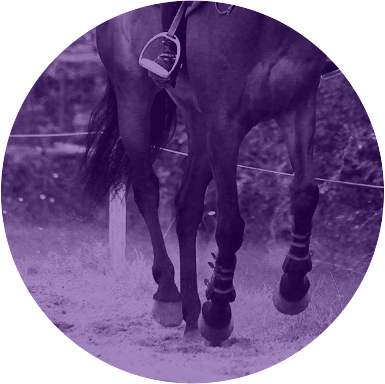
Cause for Pain
Horses suffering from navicular syndrome feel pain in the palmar, or heel, region of the foot. They show gait abnormalities associated with degenerative lesions of the navicular bone.
Clinical Signs and Diagnosis
Clinical signs associated with navicular syndrome can vary but are typically indicated by a gait change or lameness which is aggravated when walking on hard ground or trotting circles.
If you suspect your horse may have navicular syndrome, please contact your veterinarian.
To diagnose navicular syndrome, the following methods may be used:

Podcast: Navicular Syndrome Update
From initial diagnosis to hoof care and bisphosphonate use, find out the newest information about this debilitating condition.
Recorded at Ask TheHorse Live